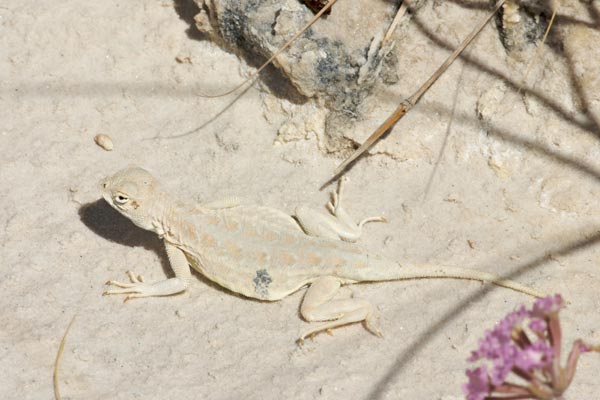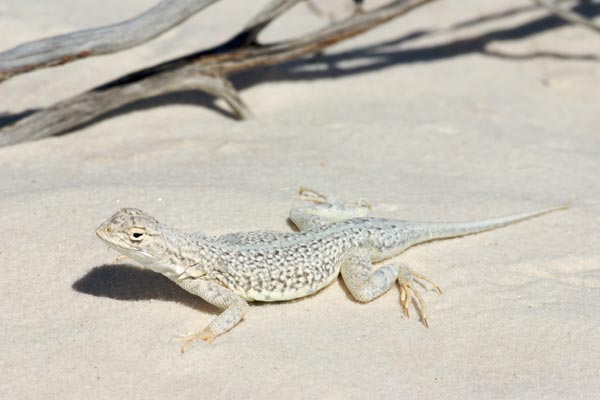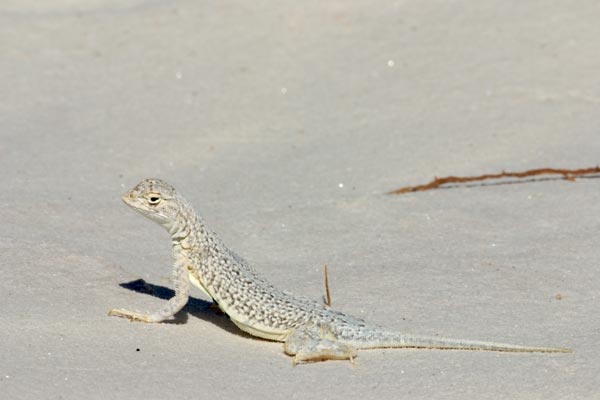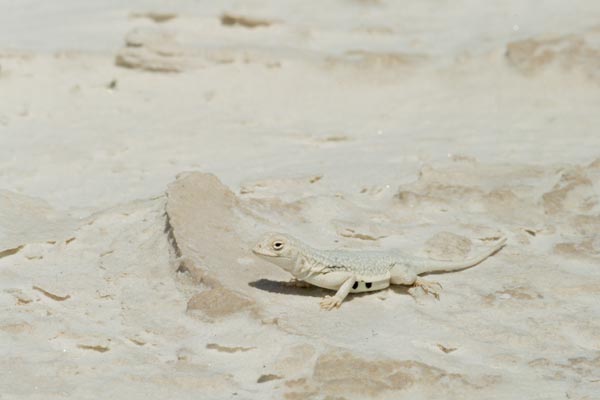



Upon arrival at the park early in the morning, we stopped by the visitors center briefly. I asked the woman working there whether she knew of any specific areas in which I would have the best chance of seeing the famous white lizards of White Sands. She looked at me in a disappointed sort of way and informed me that it was very difficult to find the lizards. Really my best chance would be to come back in the evening and try then, because the few people who see these lizards generally do so after the lizards come out at night. Recognizing this as complete nonsense, I cheerfully thanked her and headed out into the dunes with my wife and sister and our collective dogs. The women and dogs went one way and I went another, so we could let the dogs frolic while giving me the best chance of finding canine-averse herps. At our first stop I saw no earless lizards but did see a few pretty whiptails. But at our second stop I saw several earless lizards, including the three individuals pictured here.
I was struck by the similarities between these guys and the fringe-toed lizards I'd seen in California. Compare the last photo here with my photo of the Coachella Fringe-toed Lizard.




- Behler, J. L., King, F. W. 1979. The Audubon Society Field Guide to North American Reptiles & Amphibians
- Crother, B. I. (ed.) 2017. Scientific and Standard English Names of Amphibians and Reptiles of North America North of Mexico, with Comments Regarding Confidence in Our Understanding, Eighth Edition
- Degenhardt, W. G., Painter, C. W., Price, A. H. 1996. Amphibians & Reptiles of New Mexico
- Smith, H. M. 1995. Handbook of Lizards: Lizards of the United States and Canada
- Stebbins, R. C. 2003. Peterson Field Guide to Western Reptiles and Amphibians, Third Edition